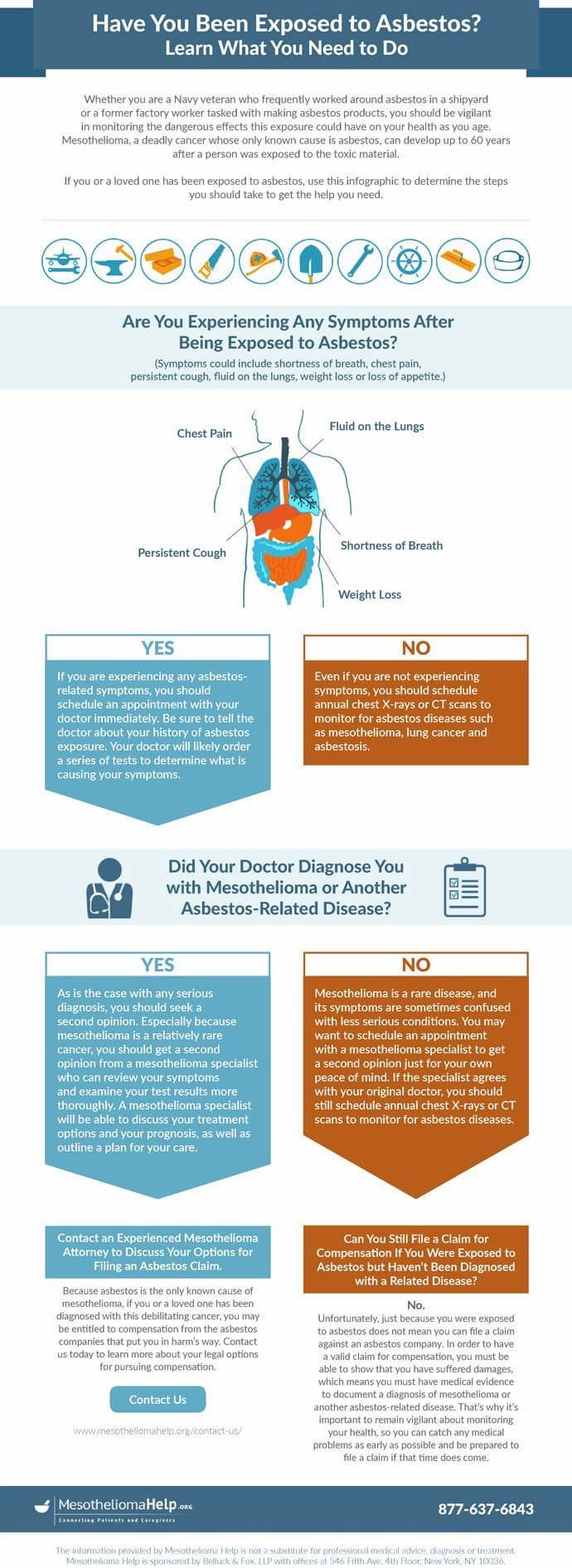
Asbestos is a dangerous material that can cause serious health problems if you're exposed to it. In this article, we'll explain what asbestos is, how you can be exposed to it, and asbestos-related diseases. We'll also look at the symptoms of asbestosis and how it's treated. Finally, we'll provide some tips on how to protect yourself from exposure to asbestos and the risk of asbestosis.
What is Asbestos?
Asbestos is a naturally-occurring mineral that was once widely used in a variety of industries because of its strength and resistance to heat and chemicals. Asbestos can be found in insulation, flooring, shingles, siding, and many other materials. If these materials are disturbed, asbestos fibres can be released into the air and inhaled by people nearby.
There are several different types of asbestos, including chrysotile, amosite, crocidolite and tremolite. Chrysotile is a white asbestos and the most common type of asbestos. It is usually found in asbestos-containing insulation, roofing materials and tiles. Amosite is often found in asbestos-containing insulation and ceiling tiles. Crocidolite, also known as blue asbestos, is the most hazardous type of asbestos and is typically found in insulation and brake linings. Tremolite is an amphibole asbestos that can be found in some construction materials and thermal insulation. All types of asbestos can pose a risk to health if inhaled, but crocidolite is the most harmful as it can cause lung cancer, particularly mesothelioma.
What Health Conditions Can You Develop From Asbestos?
Asbestos is made up of tiny fibres that can become airborne and be inhaled, where they can lodge in the chest cavity and cause irritation to the lung tissue. Over time, this irritation can disrupt lung function and lead to different kinds of lung diseases, such as asbestosis, a chronic lung disease that causes symptoms like shortness of breath, chronic cough and chest pain.
Asbestosis results from prolonged exposure to asbestos, but it is often mistaken for other conditions like bronchitis or chronic obstructive pulmonary disease (COPD), so it's important to see a doctor if you think you may have been exposed to large amounts of asbestos and are experiencing symptoms. Besides increasing the risk of lung cancer and asbestosis, long-term exposures can also lead to another asbestos-related condition called pleural disease or pleural effusion.
What are the Symptoms of Asbestosis?
The obvious signs of asbestos affecting your lungs include dry cough, shortness of breath and pleural thickening. Mesothelioma patients may experience abdominal pain, loss of appetite and irregular bowel movement.
If you have developed asbestosis, you may exhibit additional symptoms, such as:
- Wheezing
- Extreme weakness or fatigue
- Excess fluid in the lungs
- Clubbed fingertips and toes
The symptoms of asbestosis don’t usually manifest after initial exposure to asbestos. It can take 10 years or four decades for the signs of asbestos-related health problems to show up. This explains why consulting a healthcare provider after coming into contact with asbestos products is critical in preventing the long-term health consequences of asbestos.
Source: mesotheliomahelp.org
Who is at Risk of Asbestos Exposure?
Occupational exposure to asbestos is a common risk factor for asbestosis and other asbestos-related diseases. Besides people with asbestos mining jobs, the risk of asbestos exposure is high among the following:
- Construction workers
- Demolition workers
- Electricians and other people who work with electrical fittings
- Nearby residents of areas where high levels of asbestos are used
How Can Asbestosis be Treated?
There is no cure for asbestosis or other asbestos-related diseases, so early diagnosis is key to survival. Because the symptoms of asbestosis can be easily confused with those of another lung condition, a pulmonologist finds it vital to conduct an extensive physical exam and review your medical history. An imaging scan, or other tests, may be ordered to rule out other health conditions. The following are some of the common diagnostic tests needed to determine the presence of asbestosis:
- Chest X-ray
- Bronchoscopy
- Computerised tomography (CT) scan
- Lung function tests such as spirometry and the 6-minute walk test
Asbestos-exposed workers should undergo regular check-ups to avoid the negative health effects associated with their jobs. Additionally, breathing exercises prescribed by a qualified breathwork practitioner can help strengthen your lungs and protect them from the potential damage caused by asbestos inhalation. It is also strongly advised to take traditional Chinese herbs that have been shown to be effective in clearing blockages in the airways. Seeking professional advice on how to protect yourself from asbestos exposure is the only way to avoid an asbestos-related lung disease like asbestosis.
How Can You Protect Yourself From Asbestos Exposure?
The best way to protect yourself from asbestos exposure is to avoid it altogether. If you work in an industry that uses asbestos, make sure to wear proper protective gear before touching any asbestos-containing materials. If you live near an asbestos factory, keep your windows closed and avoid spending time outside near the factory. In case asbestos is released into the air from a natural disaster or accident, stay indoors and avoid breathing in the asbestos fibres.
Asbestos workers aren't the only ones who are at risk of exposure. Even homeowners renovating their homes are susceptible to the dangers of asbestos exposure and asbestosis. Having said that, if you live in an older house, have it inspected for asbestos before undertaking any renovation projects.
If you think you may have been exposed to asbestos fibres or have developed symptoms of asbestosis, it is important to see your doctor right away. Early diagnosis and treatment are essential for preventing further health complications.










